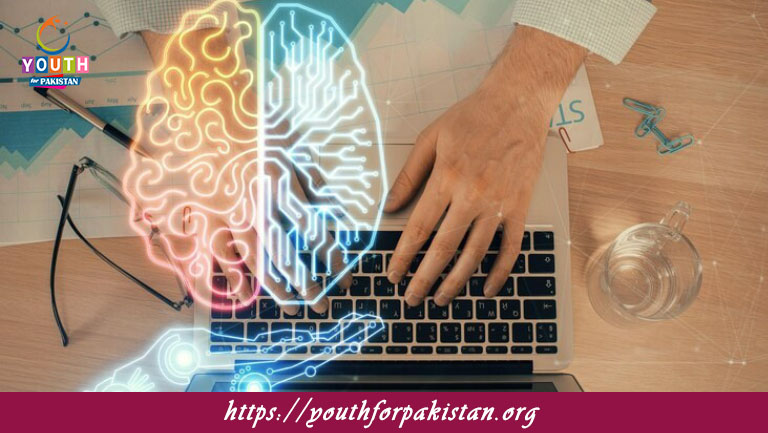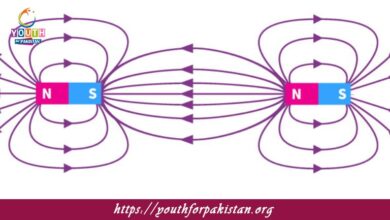Negative Feedback Mechanism MDCAT MCQs with Answers

Welcome to the Negative Feedback Mechanism MDCAT MCQs with Answers. In this post, we have shared Negative Feedback Mechanism Multiple Choice Questions and Answers for PMC MDCAT 2024. Each question in MDCAT Biology offers a chance to enhance your knowledge regarding Negative Feedback Mechanism MCQs in this MDCAT Online Test.
What is the primary function of a negative feedback mechanism?
a) To amplify changes
b) To maintain homeostasis
c) To disrupt body functions
d) To increase hormone levels
In a negative feedback mechanism, a change in a variable triggers a response that:
a) Amplifies the change
b) Opposes the change
c) Neutralizes the change
d) Has no effect
Which of the following is an example of a negative feedback mechanism?
a) Blood clotting
b) Childbirth contractions
c) Regulation of blood glucose levels
d) Secretion of oxytocin during labor
In the regulation of blood glucose, which hormone is released in response to high blood glucose levels?
a) Insulin
b) Glucagon
c) Cortisol
d) Epinephrine
What is the role of glucagon in a negative feedback loop?
a) Lower blood glucose
b) Increase blood glucose
c) Maintain constant glucose levels
d) Increase insulin secretion
Which of the following is a characteristic of a negative feedback loop?
a) It amplifies changes
b) It restores balance to a system
c) It promotes rapid change
d) It destabilizes homeostasis
Which organ system is responsible for regulating blood pressure through a negative feedback mechanism?
a) Respiratory system
b) Endocrine system
c) Cardiovascular system
d) Digestive system
How does the body respond to high blood pressure in a negative feedback loop?
a) By decreasing heart rate
b) By increasing respiration rate
c) By releasing more adrenaline
d) By increasing glucose levels
The hypothalamus plays a key role in which negative feedback process?
a) Thermoregulation
b) Digestion
c) Muscle contraction
d) Blood clotting
In thermoregulation, what does the body do when it becomes too hot?
a) Shivers
b) Sweats
c) Increases heart rate
d) Constricts blood vessels
Which of the following processes is an example of negative feedback in the body?
a) Childbirth
b) Fever response
c) Maintaining body temperature
d) Blood clot formation
What happens in a negative feedback loop when the body’s temperature drops?
a) The body sweats
b) The body shivers
c) The blood vessels dilate
d) The heart rate increases
Which hormone is involved in a negative feedback mechanism controlling blood calcium levels?
a) Insulin
b) Glucagon
c) Parathyroid hormone
d) Estrogen
What is the main function of a negative feedback system in hormonal control?
a) To increase hormone production
b) To stop hormone production entirely
c) To maintain hormone levels within a narrow range
d) To activate hormone release randomly
Which of the following describes the effect of negative feedback on hormone secretion?
a) It increases hormone secretion continuously
b) It adjusts secretion to prevent overactivity
c) It maintains hormone secretion at maximum levels
d) It prevents hormone secretion altogether
When blood calcium levels are too high, which hormone reduces them in a negative feedback loop?
a) Parathyroid hormone
b) Insulin
c) Calcitonin
d) Thyroxine
What happens to hormone secretion in a negative feedback loop when the desired level is reached?
a) It continues at the same rate
b) It decreases or stops
c) It increases
d) It fluctuates randomly
Which of the following is an example of a negative feedback mechanism in the body?
a) Blood clot formation
b) Blood sugar regulation
c) Oxytocin release during labor
d) Lactation
The regulation of which variable is an example of a negative feedback system?
a) Muscle contraction
b) Childbirth
c) Body temperature
d) Sweating
Which hormone is regulated by a negative feedback loop in response to high blood glucose levels?
a) Glucagon
b) Insulin
c) Cortisol
d) Epinephrine
How does negative feedback maintain homeostasis?
a) By reinforcing changes in the body
b) By inhibiting changes in the body
c) By amplifying physiological responses
d) By creating oscillations in function
When oxygen levels decrease, what response is triggered by negative feedback in the body?
a) Increase in blood pH
b) Decrease in heart rate
c) Increased breathing rate
d) Decreased respiratory activity
Which of the following does not involve negative feedback?
a) Body temperature regulation
b) Blood sugar control
c) Heart rate increase during exercise
d) Oxytocin secretion during labor
In a negative feedback mechanism, if blood pressure rises, the body’s response is to:
a) Increase blood pressure further
b) Decrease blood pressure
c) Maintain high blood pressure
d) Ignore the change
What type of feedback mechanism is involved in maintaining blood pH?
a) Positive feedback
b) Negative feedback
c) Neutral feedback
d) No feedback
The secretion of insulin after a meal is an example of which type of feedback?
a) Positive feedback
b) Negative feedback
c) No feedback
d) Neutral feedback
When body temperature rises, which of the following is an example of a negative feedback response?
a) Shivering
b) Sweating
c) Increased heart rate
d) Muscle contraction
What is the ultimate goal of negative feedback mechanisms?
a) To enhance changes in the body
b) To stabilize physiological variables
c) To decrease hormone levels permanently
d) To disrupt homeostasis
Which system uses negative feedback to regulate hormone levels?
a) Nervous system
b) Endocrine system
c) Muscular system
d) Digestive system
In a negative feedback loop controlling blood pressure, baroreceptors are responsible for:
a) Increasing blood pressure
b) Detecting changes in blood pressure
c) Preventing blood flow
d) Enhancing cardiac output
Which hormone is controlled by a negative feedback loop involving the hypothalamus?
a) Insulin
b) Cortisol
c) Oxytocin
d) Thyroid-stimulating hormone
Negative feedback loops are important in which physiological process?
a) Childbirth
b) Regulation of body temperature
c) Milk ejection
d) Blood clotting
Which of the following is NOT a characteristic of negative feedback?
a) Reduces changes in a system
b) Involves hormonal regulation
c) Enhances changes in a system
d) Maintains homeostasis
The release of which hormone is inhibited in response to high blood calcium levels in a negative feedback mechanism?
a) Calcitonin
b) Parathyroid hormone
c) Glucagon
d) Insulin
How does the respiratory system use negative feedback to regulate blood pH?
a) By increasing CO2 levels
b) By decreasing breathing rate
c) By increasing oxygen intake
d) By expelling excess CO2
Negative feedback loops are most commonly associated with:
a) Stabilizing physiological systems
b) Increasing variable changes
c) Amplifying deviations from normal
d) Inducing rapid change
Which of the following systems is regulated by negative feedback?
a) Fight-or-flight response
b) Temperature regulation
c) Uterine contractions during labor
d) Blood clotting
When blood pressure falls, which negative feedback response is triggered?
a) Increased blood pressure
b) Decreased heart rate
c) Increased insulin release
d) Decreased respiration rate
If you are interested to enhance your knowledge regarding Physics, Chemistry, Computer, and Biology please click on the link of each category, you will be redirected to dedicated website for each category.





